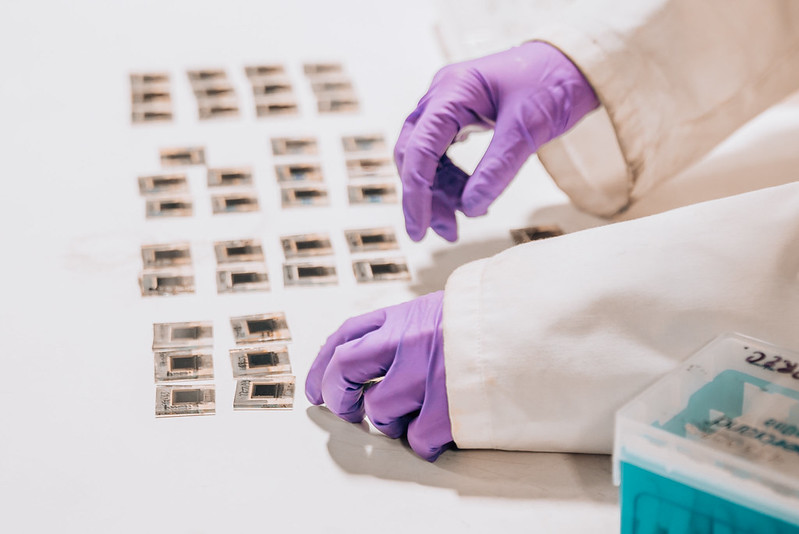A paper on green solvents for the manufacture of solar cells has been co-authored by SPECIFIC at Swansea University, KAUST in Saudi Arabia, and the University of KwaZulu-Natal (UKZN) in South Africa. This is the first joint paper between UK, Saudi Arabia, and South Africa to be published with support from SUNRISE.
The paper focuses on the selection of sustainable solvents for lab-scale manufacture of perovskite solar cells, an important step towards translating the technology from the lab to commercial scale safely and sustainably.
Perovskite solar cells have several advantages over traditional silicon solar panels: they are cheaper to manufacture, cheaper to install, and more efficient. However, several of the solvents commonly used to make these solar cells in the lab are toxic, and it is therefore necessary to find alternatives that do not harm our health or our environment when translating the technology for commercial use.
The authors of the new paper aim to provide a set of criteria for selecting alternative, non-toxic solvents, demonstrating the application of green chemistry principles to the selection process. They hope that these criteria will act as a framework for others to follow and hasten the development of green solvent systems for perovskite materials. Furthermore, the composition of their developed solvent system can be tuned, which will be useful in adapting the solvent to the different techniques used for scaling up this exciting technology.
Dr Matthew Davies, the research lead at Swansea University, said:
“The use of hazardous solvents in the manufacture of perovskite solar cells poses a significant barrier to their large-scale production, so finding replacements is essential to speeding up commercialisation. Our paper presents examples of non-hazardous solvents that perform just as well but also details how others can use the same methodology to find high-performing, green, safe solvents.”
Another of our partners in Mexico, CINVESTAV Merida, are researching ways to scale up the production of solar cells using t-shirt printers. The use of green solvents is therefore also highly valuable to their work.
Dr Dena Pourjafari from CINVESTAV Merida said:
“In Mexico, there is available capacity and capability in terms of local printing skills. Our goal in CINVESTAV is to create the supply chains and route to market by upscaling the perovskite technology. Our main concern is developing green and low-cost solvents used both in perovskite solutions and functional printing pastes.
Using green solvents through the upscaling process not only impacts the environment but also ensures the safety of the local laborers who are experts in printing but non-experienced in solvent handling.”
Read the article here: https://pubs.rsc.org/en/content/articlehtml/2021/gc/d1gc00079a

